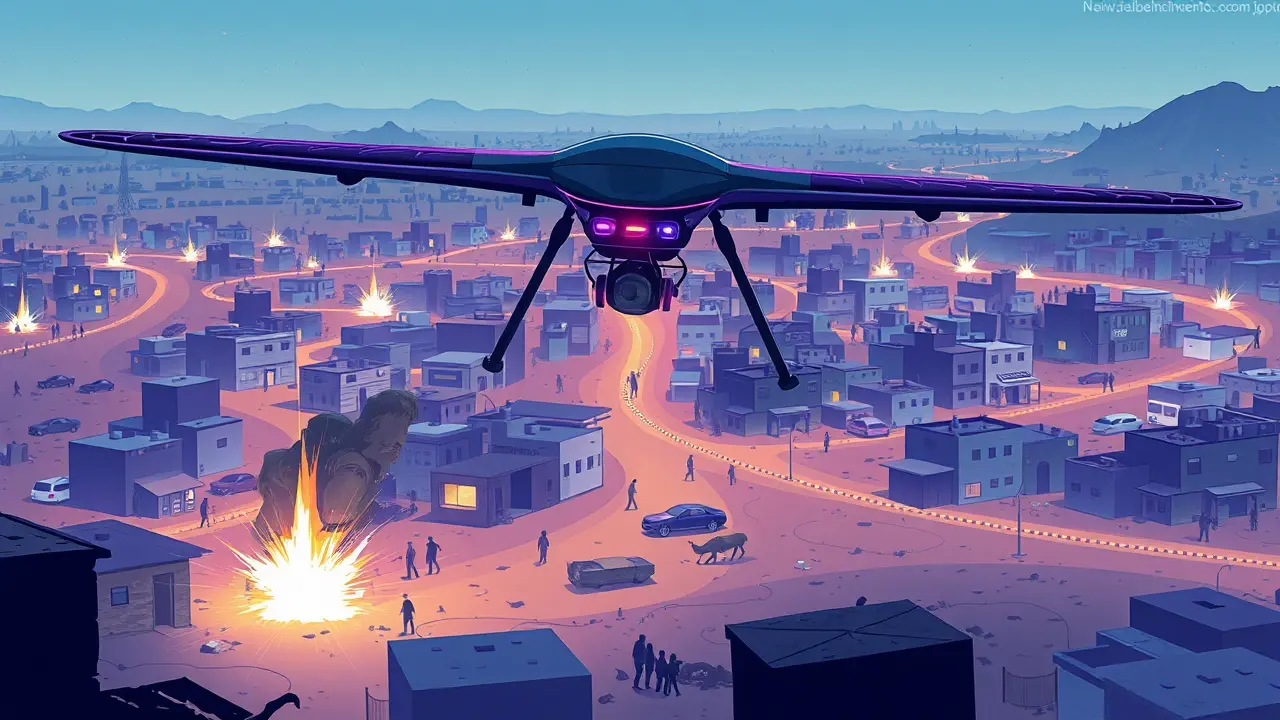Drone strike in Sudanese city kills dozens amid siege.
The Sudanese city of El-Fasher, a once-bustling hub now hollowed out by seventeen relentless months of encirclement, has been plunged into a new depth of horror following a drone strike that has killed dozens, a stark escalation in a siege that has methodically starved its people under the gaze of a world that seems to have looked away. For over a year, the Rapid Support Forces (RSF) have tightened their grip like a vice around this North Darfur capital, transforming a humanitarian crisis into a calculated campaign of deprivation where the specters of hunger and starvation became daily companions for the residents trapped within.This latest attack isn't an isolated tragedy but the explosive punctuation to a long, slow-motion collapse of civil society, where markets have been emptied, medical supplies have dwindled to nothing, and the very hope of rescue has faded into the dusty, conflict-scarred horizon. The siege itself is a brutal textbook example of urban warfare, a tactic as old as war itself but rendered with modern cruelty, cutting off not just food and water but also information and escape routes, leaving families to face an impossible choice between the crossfire inside and the uncertainty of flight.The RSF, a paramilitary force born from the Janjaweed militias of the Darfur genocide two decades ago, has a documented history of such tactics, yet the international response remains fractured, bogged down in diplomatic gridlock and competing geopolitical interests that treat Sudan as a chessboard rather than a nation in agony. Aid agencies on the ground, their voices often strained with desperation, have been warning of a 'catastrophic' famine for months, their convoys routinely blocked and their warehouses looted, making the delivery of a single sack of grain a monumental achievement.This drone strike, likely a chillingly precise instrument of terror, signals a dangerous new phase; it demonstrates a tactical shift towards more technologically advanced weaponry in a conflict often characterized by brutal close-quarters combat, raising terrifying questions about the future of urban warfare in failing states. The immediate aftermath is a scene of chaos and grief—makeshift hospitals overwhelmed, the wounded lying on floors, and a community already pushed to the brink now forced to bury its dead in mass graves.But the consequences will ripple far beyond the immediate carnage, further destabilizing a region already teeming with ethnic militias and proxy conflicts, and potentially creating a new wave of displaced persons that will strain the resources of neighboring Chad and the Central African Republic to their breaking point. Analysts fear that El-Fasher could become another Srebrenica, a name synonymous with international failure, a stark reminder that when the world’s attention wavers, atrocities flourish in the shadows.The personal stories emerging are harrowing: parents describing the sound of the drone as a persistent buzz of death before the explosion, children who no longer remember a time without the constant rumble of fear, a entire generation being shaped by trauma. This is not merely a military engagement; it is the systematic unraveling of a city, a culture, and a people, and the killing of dozens in a single strike is the most violent symptom of a disease that has been festering for seventeen months, a disease of indifference that is as deadly as any bomb.
It’s quiet here...Start the conversation by leaving the first comment.
© 2025 Outpoll Service LTD. All rights reserved.
